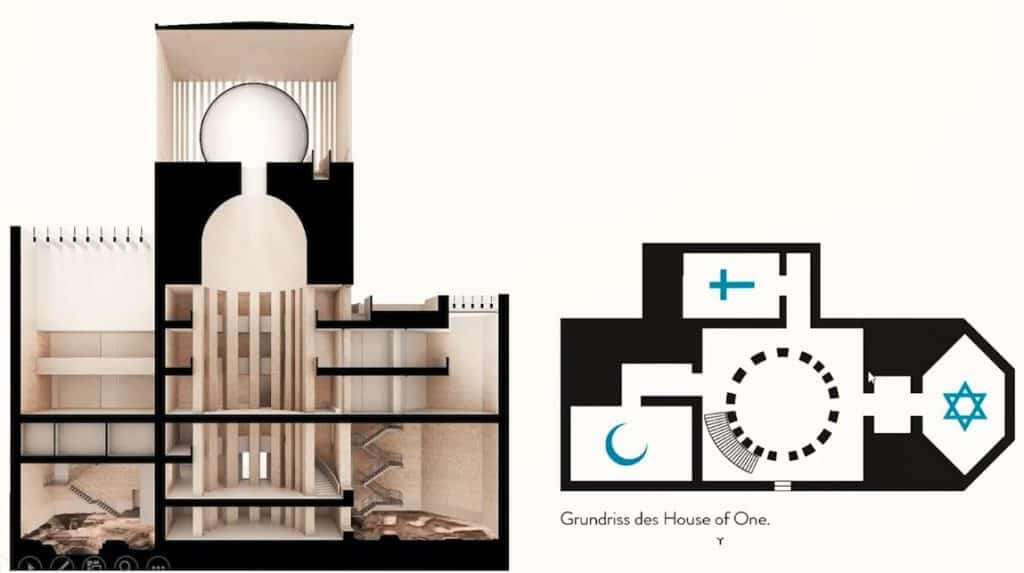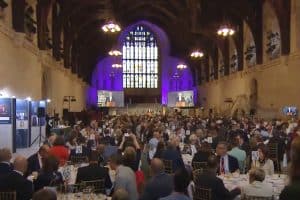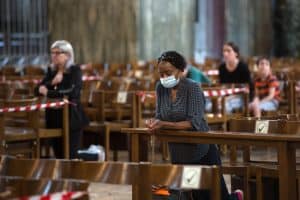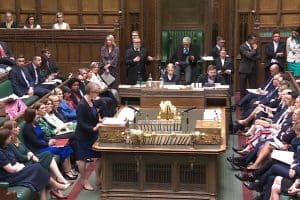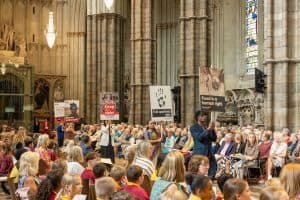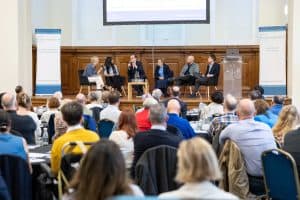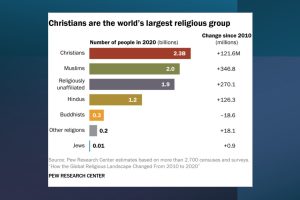By Catherine Pepinster
In 1964, the communist government of East Germany had the church of St Peter in Berlin’s Petriplatz torn down to make way for a car park. The Trabants that filled the multi-storey are long gone, as is the communist administration. This week life on Petriplatz comes full circle with the return of religion to the site of St Peter’s Church.
But the foundation stone being laid on Thursday is not just for a Christian building. It’s for a faith centre that will provide space for a church, a mosque and a synagogue combined as well as a meeting space for those of all faiths and none.
Plans for the centre — called the House of One — have been 10 years in the making, with the time spent on archaeological digs on the site in Petriplatz as well as fundraising: the project is expected to cost €47m (£40m) and most of it has been raised, including €30m from German state and federal authorities. Its backers support the vision behind it as a place that brings together the Abrahamic faiths of Judaism, Christianity and Islam to engage in religious dialogue and share ideas around science, art and culture.
The House of One, as well as being an actual space is also a symbol of how humanity can move on from conflict to dialogue and peace-making. It is being constructed in the city from where Hitler planned his annihilation of the Jews and where many religious buildings were flattened by allied bombing raids during the Second World War.
Architects Kuehn Malvezzi have also created a theological symbol in their design of the House of One: while the three faiths each have their own rooms for worship, they can access them only by crossing the meeting space — symbolising that the faith centre is a theological crossroads.
And as Sophia Athié, director of development for the House of One, pointed out at a Religious Media Centre online briefing on Tuesday, the idea for this symbol of religious unity was first discussed after the political reunification of Germany 32 years ago.
However important the ambitious construction project is, it needs more than bricks and mortar, Imam Osman Örs of the House of One told the briefing session. “Building the House of One is our main goal but without a soul or a heart it is meaningless,” he said.
And he also acknowledged that just being in the same building was not enough; there were challenging issues to be discussed, but the plan was for dialogue while maintaining the different religions’ identity.
“One of our issues is that we are encountering liturgical and theological questions. We can’t just leave them but they are very sensitive”, he said. “We want to keep our faith in all their colours, as it were.”
Those involved have already come together: they organised prayers for solidarity during the Covid-19 pandemic. They have also held sessions in several schools to discuss their vision, and in the age of social media, there will be digital sessions too.
The Berlin faith project comes at a time when there are continued tensions around contested holy places elsewhere. Earlier this month there were clashes in Jerusalem as Israeli forces sought to block Palestinian Muslims gathering to mark Ramadan at the Al-Aqsa Mosque in the old city, also venerated as a holy site in Judaism and Christianity.
And almost a year ago, a Turkish court ruled that Hagia Sophia, built as a Christian cathedral 1,500 years ago, later turned into a mosque, and then a museum in 1934, can be used only a mosque. At the time the World Council of Churches, Pope Francis and the Orthodox Church in Russia all expressed concern.
Elsewhere in the world, others are, like the founders of the House of One, trying to use spaces to help to unify people of faith rather than separate and divide them. In Bangui, Central African Republic, a House of Peace has been set up; in Georgia, there is a peace academy and in Haifa, Israel, a Garden of One, dedicated to peace between religions, is being planned. But according to Imam Örs, the House of One is an unprecedented project.
“It is the first house of prayer and a sacred building planned from the start by Christians, Jews and Muslims,” he said. “And the fourth neutral room is unique.”
In Britain, Jewish architect Daniel Leon, of Square Feet Architects, has worked with Christian and Muslim colleagues to create a space where members of all three faiths could come together. But rather than have separate areas for worship, Leon and his team have a proposal for a space that could be a mosque on a Friday, a synagogue on a Saturday and a church on a Sunday. They are working on a “pop-up” building — what Leon described as “a travelling Abraham’s tent”.
Another British project for a faith centre is being planned by Coexist House, a charity set up to build such a centre in the heart of London to further public understanding of the world’s faiths and religious traditions and promote peaceful relationships between the faiths.
Sir Bernard Rix, chairman of Coexist House, said the original idea was for an “Abraham house” of the three religions of Judaism, Christianity and Islam, but plans were now for a space where those of all faiths and none could come together.
“It is only by visiting our places of worship and our homes that we get to understand one another”, he told the RMC session.
Multi-faith centres are often found in airports and universities. One of the most ambitious centres is at Surrey University, where 15 chaplains and religious belief workers now serve staff and students.
Rabbi Alex Goldberg, dean of religious life and belief and co-ordinating chaplain at Surrey University, explained that bringing faiths together in multi-faith spaces had required a great deal of negotiation with faith leaders including the Archbishop of Canterbury and the Chief Rabbi. Nor was it as simple as providing space for one religion and then another: different traditions within the faiths had different liturgical requirements, and discussions had to be held about who would use what space when.
A warning note was sounded by David Thomas, emeritus professor of Christianity and Islam at Birmingham University and interfaith adviser to the diocese of Bath and Wells. He pointed out that the doors in the design for House of One were its most significant characteristic, given that they would be closed to others when particular forms of worship were taking place.
“When they come out of these rooms to the communal space, what do they bring?” he asked. “If nothing, they are not sharing. But it they bring out a lot, they are not distinctive. How do you retain your [religious] identity while retaining respect for others?”
Imam Qari Asim, who chairs the Mosques and Imams National Advisory Board, was more optimistic.
“The key for the House of One is the fourth room and what this allows as a shared space. We are distinct but we have more in common than what divides us.”
– Imam Qari Asim

